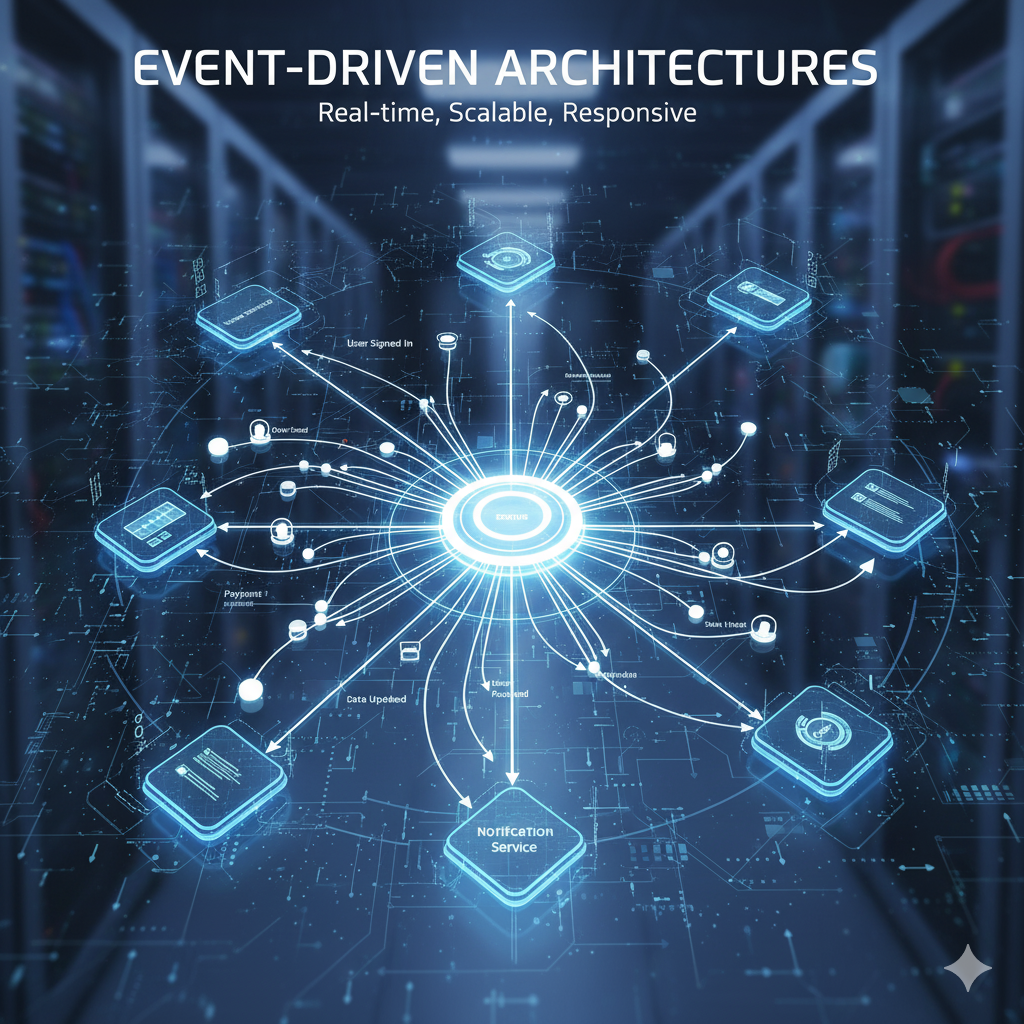Introduction to Event-Driven Architecture
Event-Driven Architecture (EDA) is a modern software design approach where applications respond to events as soon as they occur.
An event is any action or change — like a user placing an order, a payment completing, or a sensor sending data.
In simple terms:
👉 Something happens → The system immediately reacts.
Why Event-Driven Architecture Matters
Today’s apps handle millions of actions every second.
E-commerce orders, bank transactions, IoT devices, and ride-booking apps all need fast responses.
EDA helps these systems remain:
- Fast
- Reliable
- Real-time
- Scalable
This makes it ideal for modern digital applications.
How Event-Driven Architecture Works
Event Producers
These components generate events anytime something happens.
Examples include:
- A customer clicking “Buy Now”
- A user logging in
- A device sending temperature data
Event Brokers
Event brokers are tools that transfer events from producers to consumers.
Popular event brokers:
- Apache Kafka
- RabbitMQ
- AWS EventBridge
Think of them as delivery services that carry events to the right destination.
Event Consumers
Consumers are services or systems that react to events.
They may:
- Send confirmation emails
- Update the inventory
- Process payments
- Store logs
Each consumer handles its task independently.
Real-World Examples of Event-Driven Architecture
E-Commerce Platforms (Amazon, Flipkart)
When you place an order:
- One service updates stock
- Another checks payment
- Another triggers shipping
All these actions happen instantly and separately.
Ride-Hailing Apps (Uber, Ola)
These apps process events like:
- Driver location updates
- Ride requests
- Trip start and end
- Fare calculations
This real-time flow is powered by EDA.
Banking & Payment Apps
Events power:
- UPI payments
- Fraud detection alerts
- Transaction notifications
This ensures instant responses and high reliability.
Benefits of Event-Driven Architecture
Real-Time Response
The system instantly reacts to changes without delay.
High Scalability
It handles huge numbers of events without slowing down.
Better Performance
The system doesn’t need to constantly check for changes — it reacts only when needed.
Independent Services
Each service works separately.
If one fails, the rest continue working.
Cost Efficiency
Cloud resources are used only when an event is triggered, reducing expenses.
Where Event-Driven Architecture Is Used
EDA is widely used in:
- E-commerce order systems
- Banking and fintech
- IoT and smart-home devices
- Real-time dashboards
- Logistics and delivery tracking
- Notifications and alert systems
- AI automation workflows
Challenges of Event-Driven Architecture
Although powerful, EDA comes with challenges such as:
- More complex debugging
- Hard-to-track event flow
- Need for strong monitoring tools
- Requirement of skilled developers
These challenges can be managed with proper planning and tools.
Conclusion
Event-Driven Architecture is one of the most important trends in modern software development. It enables fast, real-time, and scalable systems that power today’s apps — from online shopping and payments to ride booking and IoT.
With the growing demand for instant user experiences, EDA continues to be a critical part of building future-ready applications.
